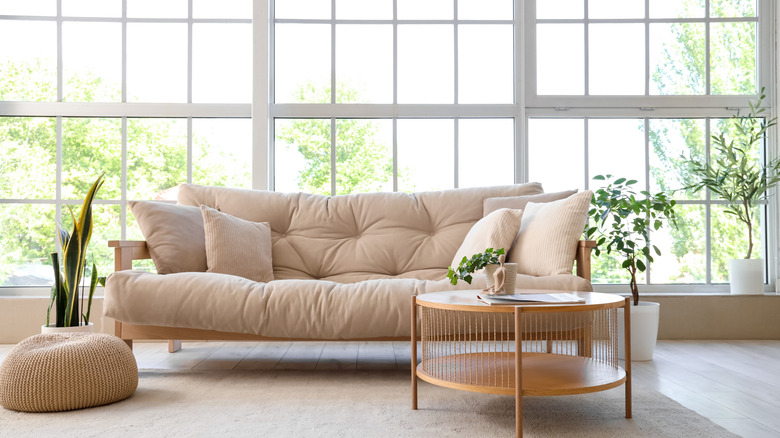Can You Dye Your Couch To Update The Style?
Let's say you've found a gorgeous couch at a really good price at the flea market. Or maybe it's just a couch you already own. You like it, but you can't help thinking it would look even better in a different color. You've probably come across a few videos on your feed showing how a simple color change can make a small living room feel bigger. Suddenly, the thought of dyeing it crosses your mind, and now you're wondering if it's actually possible.
The short answer is yes. You can pretty much dye anything. The real issue is what kind of material your couch is made of. Natural fabrics like cotton, linen, or wool usually take dye well, while synthetics like polyester or acrylic will require specialized products. Leather, on the other hand, falls into a different category altogether. You'd need oil-based or aniline dyes that can penetrate the surface without ruining the texture.
So if you're thinking about it, start by checking the fabric care tag. If it says cotton, linen, or wool, you should have a relatively straightforward project on your hands. However, most commercial couches today are made from synthetic fabrics or some blend of natural and synthetic fibers. These materials are engineered to resist spills, stains, and moisture. That also means they tend to resist dye, especially if it's water-based. So, to get any real color payoff, you'll need to use a synthetic-specific dye, which often needs boiling water and heat to set. But there's still more to keep in mind.
What you need to know before dyeing your couch
Dyeing your couch can be a clever way to bring old furniture back to life, but there are caveats. For starters, although it's easier to go from a light shade to a darker one (like tan to navy), you might still end up with streaks or undertones. It helps to keep that in mind before you start. Nonetheless, to boost your chances of getting even results, make sure you start by deep-cleaning the couch. As for how to dye a couch, the most common method involves soaking the fabric cover in a tub or bucket of dye.
For this, you'll need painter's plastic to protect your floors, gloves to protect your hands, plenty of patience, and enough time to let the couch dry completely. That could take anywhere from 24 hours to a couple of days. Alternatively, you could mix liquid dye in a spray bottle and apply it in layers instead. This gives you more control, especially on large surfaces. And it works particularly well for touching up any patchy spots left after soaking.
It's also important to consider how your couch is built. If it has removable covers, the process is a lot easier. You can easily toss them into a large tub or the washing machine for a dye bath. Fixed upholstery, on the other hand, means working directly on the couch itself. That process is tedious no doubt, but if you're patient and precise, you can pull off a decent result.
The problem with dyeing a couch
Now, don't get us wrong: dyeing is definitely a sustainable choice. It can transform your couch for a fraction of the cost of replacing it. Because let's be honest, buying a new couch isn't always in the budget. And sometimes, it's not even about the cost. It's that you just can't bear to part with the one you already have. Maybe it's comfortable. Maybe it fits your space perfectly. Or maybe it's tied to too many memories.
But here's the thing: there's a high chance you end up with an uneven distribution of color, especially on synthetic blends. Even after sealing, some dyes tend to bleed and transfer onto clothing or skin. Plus, it's not unusual for the color to begin to fade over time. Most people realize, only after dyeing, that it's not what they want. So, if the slightest imperfection would bother you and you'd rather have a spick-and-span finish, consider swapping out the slipcover instead. A couch cover can refresh not just the color but even the texture. You can even use regular sheets as couch covers.
That said, if you're still up for a dye job, test a small patch first to see how the fabric responds, whether the color mix is the right tone, or if it needs some adjusting. For a deeper, richer finish, some recommend leaving the fabric to soak overnight in the tub of dye. Of course, just make sure to use a container or tub that's big enough and one you don't mind getting stained.


